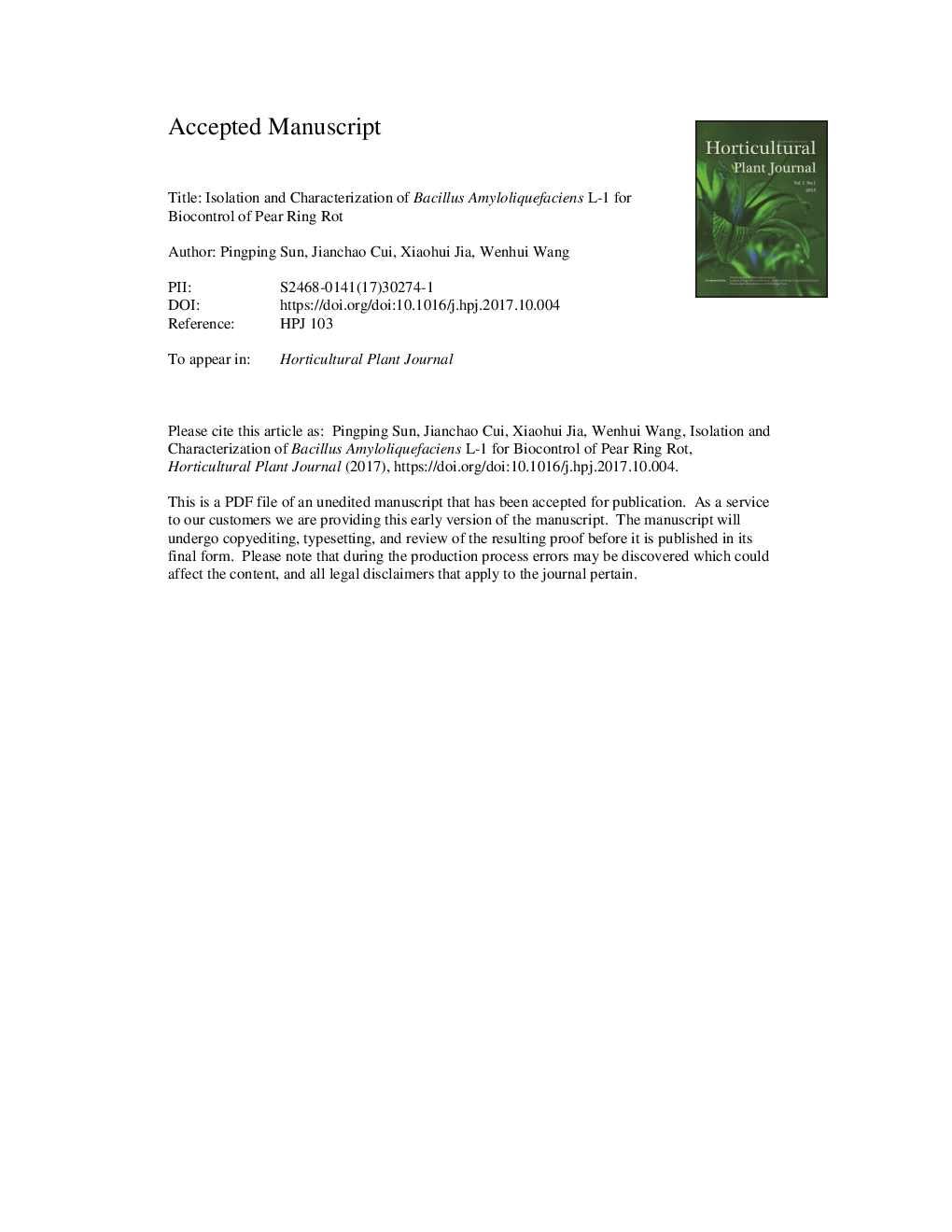| Article ID | Journal | Published Year | Pages | File Type |
|---|---|---|---|---|
| 8892200 | Horticultural Plant Journal | 2017 | 26 Pages |
Abstract
Considering the heavy losses caused by pear ring rot (Botryosphaeria berengeriana) disease, the potential biocontrol agent against B. berengeriana was isolated and characterized in this work. Bacteria, isolated from pear orchard rhizosphere soil, were screened for the biological control of pear ring rot caused by B. berengeriana. Among them, strain L-1 showed noticeable inhibitory activities against B. berengeriana and six other commonly occurring postharvest pathogens. Molecular methods indicated strain L-1 was Bacillus amyloliquefaciens. The potential of strain L-1 as an effective biocontrol agent was further estimated. Results showed strain L-1 could successfully colonize in pear wounds, its colonies reached 142.35 folds on 4 days post inoculation, and maintained at a high level during storage. In addition, strain L-1 caused abnormal hyphae growth of B. berengeriana, and its inhibitory percentage against pear ring rot reached 76.55% in vivo on 11 days post inoculation. Strain L-1 significantly induced the peroxidase (POD) and catalase (CAT) activities and delayed the accumulation of malondialdehyde (MDA) in pears. What's more, strain L-1 did not impair the fruit quality. All these results suggest that B. berengeriana L-1 is a promising agent for the biocontrol of pear ring rot.
Related Topics
Life Sciences
Agricultural and Biological Sciences
Forestry
Authors
SUN Pingping, CUI Jianchao, JIA Xiaohui, WANG Wenhui,
